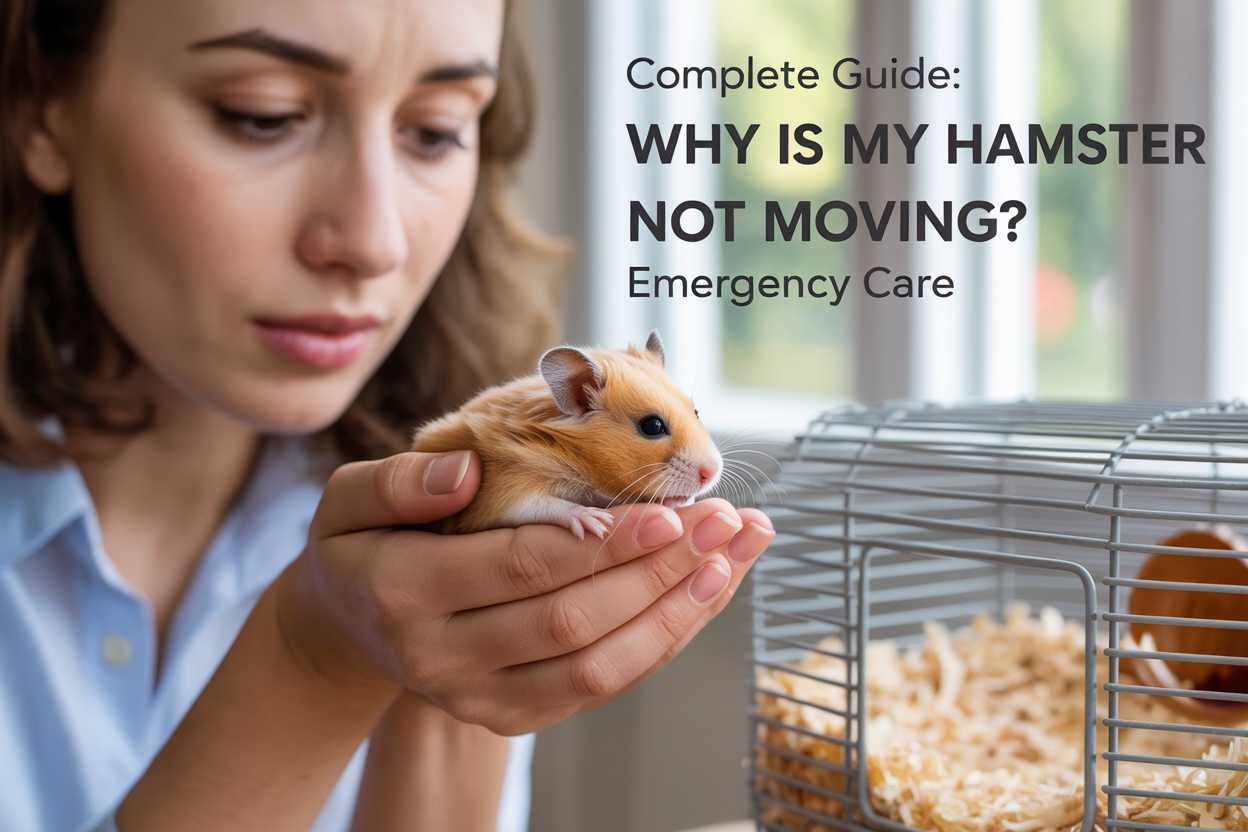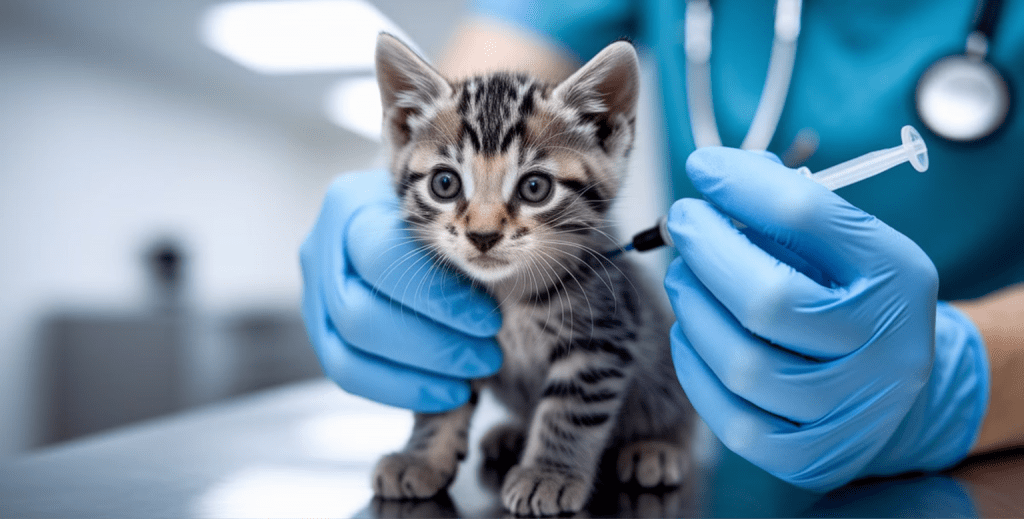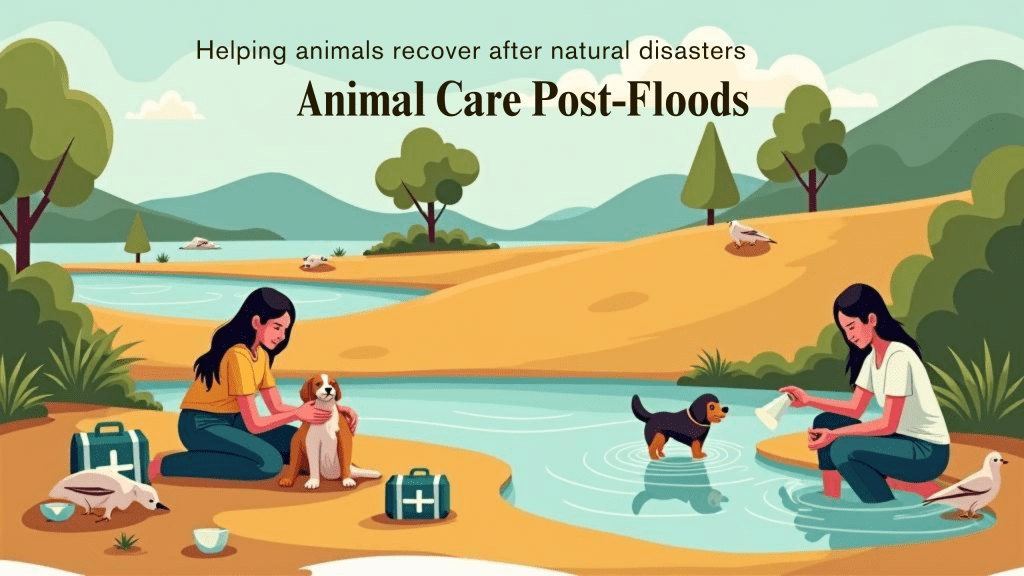Why Is My Hamster Not Moving? Emergency Care Guide 2025

Why is my hamster not moving? A hamster not moving but breathing may be experiencing hibernation (torpor), severe illness, injury, shock, or hypothermia. Understanding hamster immobile causes is critical for appropriate response. Immediate assessment is essential: check for breathing, warmth, and responsiveness. If your hamster is cold and immobile, gradually warm them as they may be in torpor. If breathing is labored, there’s visible injury, or no signs of life, seek emergency veterinary care immediately.
Immediate Emergency Response Steps
When you discover your hamster not moving, the first minutes determine whether the situation is recoverable or life-threatening. Proper hamster emergency care starts with quick assessment and appropriate action.
Check Vital Signs:
- Breathing: Watch for subtle chest movements. A hamster not moving but breathing is in a very different situation than one with no respiration. Place your hand near their nose to feel for breath.
- Heartbeat: Gently touch their chest to feel for rapid fluttering (300-600 beats per minute when healthy).
- Body Temperature: Is your hamster cold or warm? Cold suggests torpor; warm suggests illness or injury.
- Eye Response: Do they blink or show eye movement when approached?
Assess Body Temperature:
Temperature is crucial for understanding why is my hamster not moving. Syrian and dwarf hamsters enter torpor when temperatures drop below 65°F (18°C). Recognizing the difference between hamster hibernation vs illness requires checking body temperature—cold bodies suggest torpor while warm bodies indicate active illness.
If cold and stiff, begin gradual warming immediately:
- Move to a warm room (75-80°F / 24-27°C)
- Cup gently in your hands using body heat
- Place on a low heating pad wrapped in towels
- Never use direct heat like hair dryers
Check for Injuries:
Examine for blood, wounds, swelling, discharge from eyes or nose, wet tail area, unusual body positioning, or labored breathing. These sick hamster symptoms require immediate veterinary attention.
Determine Urgency:
Understanding when to take hamster to vet is critical. Seek immediate veterinary care if:
- No breathing after 2-3 minutes
- Labored, gasping, or wheezing breathing
- Visible injuries or bleeding
- No response after 60 minutes of warming
- Warm body but completely unresponsive
- Seizures or trembling
Monitor at home if:
- Cold hamster showing recovery signs during warming
- Normal breathing but lethargic
- Recent temperature drop explains torpor
Reason 1: Torpor (Hibernation) – Most Common Cause
The most frequent answer to why is my hamster not moving is torpor, a dangerous hibernation-like state triggered by cold temperatures. Understanding hamster hibernation vs illness helps you distinguish torpor from serious health conditions—torpor occurs in cold environments, while illness happens regardless of temperature.
Hamsters enter torpor below 65°F (18°C). Their metabolic rate drops dramatically, heart rate slows to 4-6 beats per minute, breathing becomes nearly imperceptible, and body temperature decreases significantly. This is one of the primary hamster immobile causes that’s often reversible with proper hamster emergency care.
Torpor Signs:
- Cold, stiff body
- Appears lifeless but retains slight warmth
- No visible breathing but shallow respiration continues
- Body curled in tight ball
- Slight whisker movement possible
- Recent temperature drop in environment
Revival Process:
Gradual warming is essential. Move to a 75-80°F environment immediately. Cup in your hands for controlled warmth, or use a low heating pad wrapped in towels. Monitor temperature frequently—it should feel warm, never hot.
Offer water once consciousness returns using a syringe or dropper. Never force water into an unconscious hamster’s mouth. Recovery typically takes 30 minutes to 2 hours with gradual improvement: slight movements, whisker twitching, eye blinking, then full consciousness.
Prevention:
Maintain cage temperature consistently above 68°F (20°C), ideally 72-75°F (22-24°C). Position cages away from windows, drafts, and air conditioning. Use room thermometers to monitor temperature. Provide extra bedding during cold months.
Reason 2: Severe Illness or Infection
Serious illness ranks as the second most common cause among hamster immobile causes. Hamsters hide illness instinctively—by the time they stop moving, their condition is typically severe. Recognizing sick hamster symptoms early dramatically improves treatment outcomes.
Common Critical Illnesses:
Wet Tail (Proliferative Ileitis): This bacterial infection primarily affects young hamsters and represents one of the most serious hamster health problems. According to VCA Hospitals, wet tail can be fatal within 24-48 hours without treatment. Sick hamster symptoms include severe diarrhea, matted wet fur around the tail, lethargy progressing to immobility, and hunched posture.
Respiratory Infections: Cause labored breathing, wheezing, nasal discharge, and eventual immobility. These hamster health problems develop from drafts, poor ventilation, or dusty bedding. A hamster not moving but breathing with wheezing sounds needs immediate veterinary attention.
Digestive Blockages: Severe constipation or bloating causes extreme discomfort leading to immobility. Signs include distended abdomen, inability to pass droppings, and refusal to eat.
Illness Signs:
- Normal or warm body temperature (not cold like torpor)
- Labored breathing or wheezing
- Discharge from eyes, nose, or mouth
- Wet, soiled rear end
- Distended abdomen
- No improvement with warming
Immediate Action:
Knowing when to take hamster to vet for illness is crucial—any warm, immobile hamster with these symptoms needs immediate care. Contact an exotic veterinarian immediately. Not all vets treat hamsters—locate an exotic vet before emergencies occur. Transport in a warm carrier with soft bedding. Bring dropping samples and information about diet and behavior changes. Never attempt home treatment—professional hamster emergency care is essential for serious illness.
Reason 3: Injury or Trauma
Physical injuries represent another critical category among hamster immobile causes. Hamsters can sustain injuries from falls, cage mate attacks, getting stuck in accessories, or rough handling.
Common Injuries:
- Falls: Cause broken bones, internal injuries, head trauma, or spinal damage
- Broken Bones: Prevent movement, cause visible deformity or swelling
- Spinal Injuries: Understanding hamster paralysis causes is important—spinal trauma from falls or attacks can cause partial or complete paralysis, making the hamster unable to move their hind legs or entire body
- Bite Wounds: From cage mate aggression (Syrian hamsters must be housed alone after 8-10 weeks)
- Trapped Limbs: In wheels, bars, or tubes causing circulation problems
Injury Signs:
- Sudden immobility after known incident
- Visible wounds or bleeding
- Abnormal body positioning suggesting hamster paralysis causes like spinal damage
- Vocalization when touched
- Normal breathing but unwillingness to move
Emergency Response:
Don’t move hamsters with suspected spinal injuries unnecessarily. Apply gentle pressure to bleeding with clean gauze. Transport in padded carriers preventing additional movement. Understanding when to take hamster to vet for injuries is critical—any visible trauma, suspected breaks, or paralysis requires immediate professional assessment.
Prevention:
Use solid-surface wheels only, ensure proper bar spacing (0.5 inches for dwarfs, 0.5-0.7 inches for Syrians), supervise handling, house Syrians alone, and secure cages away from other pets.
Reason 4: Temperature Extremes
Heat Stroke:
Temperatures above 80°F (27°C) cause discomfort; above 85°F (29°C) can be fatal. Heat stroke represents one of the critical hamster health problems requiring emergency intervention. Signs include immobility, rapid shallow breathing, excessive drooling, red ears and paws, and hot body temperature.
Emergency response: Move to cool environment (68-72°F), gently mist fur with cool water, offer water if conscious, and contact vet immediately. Heat stroke causes internal organ damage requiring professional care.
Prevention: Never place cages in direct sunlight or near heat sources. Use air conditioning during hot weather. Provide ceramic tiles for cooling and frozen water bottles wrapped in towels.
Severe Hypothermia:
Beyond torpor, extreme cold causes life-threatening hypothermia with extremely cold rigid body, no detectable breathing, and blue or pale gums. Requires immediate veterinary intervention while continuing gradual warming during transport.
Reason 5: Poisoning or Toxic Exposure
Poisoning is another serious category among hamster immobile causes. Hamsters’ small size means tiny toxin amounts cause serious reactions through contaminated food, toxic bedding, household chemicals, or unsafe cage items.
Common Toxins:
- Unsafe foods (chocolate, caffeine, garlic, onions, citrus)
- Cedar or pine bedding containing harmful phenols
- Household chemicals and air fresheners
- Painted toys or items with toxic adhesives
Poisoning Signs:
- Sudden onset after exposure
- Seizures or trembling (neurological sick hamster symptoms)
- Difficulty breathing
- Excessive drooling
- Rapid decline to immobility
Emergency Response:
Identify suspected toxin, contact exotic vet or ASPCA Animal Poison Control (888-426-4435) immediately. Knowing when to take hamster to vet for poisoning is critical—immediately, without delay. Transport to emergency care with toxin container if possible. Never attempt home remedies.
Reason 6: Old Age and Natural Decline
Syrian hamsters live 2-3 years; dwarf hamsters 1.5-2.5 years. Age-related immobility develops gradually, differing from acute illness in younger hamsters and representing natural hamster health problems in elderly pets.
Age-Related Signs:
- Gradual activity decrease over weeks/months
- Increased sleeping
- Weight loss despite adequate food
- Thinning fur
- Difficulty climbing or using wheels
Comfort Care:
Move food and water closer to resting areas. Provide shallow dishes. Offer soft foods like cooked vegetables or baby food. Remove multi-level platforms. Maintain consistent warmth at 72-75°F. Monitor for suffering signs including labored breathing or inability to eat for 24+ hours.
When to Consider Euthanasia:
Consult exotic vets about quality of life. Understanding when to take hamster to vet for end-of-life assessment helps you make compassionate decisions. Signs euthanasia may be kindest include unmanageable pain, inability to eat/drink for extended periods, and severe breathing difficulties. Veterinary euthanasia is peaceful and prevents prolonged suffering.
How to Determine If Your Hamster Has Passed Away
Hamsters in torpor can appear deceased, making accurate determination crucial. Understanding the difference between a hamster not moving but breathing versus one that has passed requires careful assessment.
Signs of Death:
- Complete rigidity (rigor mortis)
- No breathing after 5+ minutes observation
- No detectable heartbeat
- Body temperature matching room temperature
- Glazed eyes with no blink response
- No response after 2+ hours
- Jaw hanging open
Signs Still Alive:
- Any remaining warmth
- Slightest chest movement
- Any muscle flexibility
- Whisker or ear twitching
- Recent temperature drop (suggests torpor)
When in Doubt:
Assume torpor and attempt warming for 60-90 minutes. Contact your exotic vet for guidance. Vets can confirm death if uncertain, providing closure and preventing premature decisions.
Prevention Through Proper Care
Many hamster immobile causes are preventable through excellent daily care, reducing hamster health problems significantly.
Optimal Housing:
- Maintain 68-75°F temperature consistently
- Provide minimum 450 square inches for Syrians, 350 for dwarfs
- Ensure proper ventilation without drafts
- Position away from windows and temperature extremes
Proper Nutrition:
- Feed high-quality commercial hamster pellets
- Supplement with safe vegetables 2-3 times weekly
- Provide fresh water daily
- Avoid toxic foods (chocolate, citrus, onions, garlic)
Safe Environment:
- Use only safe bedding (aspen, paper-based, hemp)
- Provide 2-3 inches bedding depth
- Clean weekly with full bedding changes
- Use solid-surface wheels (8-12″ for Syrians, 6-8″ for dwarfs)
Health Monitoring:
Recognizing sick hamster symptoms early prevents emergencies. Observe daily for behavior changes, check droppings (should be small, dark, firm), weigh weekly, and schedule annual exotic vet wellness exams.
FAQ: Common Questions About Immobile Hamsters
How do I know if my hamster not moving but breathing is in torpor or sick?
Check body temperature. A cold hamster suggests torpor, while a warm hamster indicates illness. Understanding hamster hibernation vs illness requires temperature assessment—torpor only occurs in cold environments below 65°F, while sick hamsters can be immobile at any temperature. If cold, begin warming and monitor for recovery. If warm, seek veterinary care immediately.
What are the most common hamster immobile causes?
The most common hamster immobile causes include torpor from cold temperatures (most frequent and often reversible), severe illness like wet tail or respiratory infections, physical injuries from falls or attacks, heat stroke or hypothermia, poisoning, and natural age-related decline in elderly hamsters. Each requires different emergency responses.
When should I take my hamster to the vet for immobility?
Knowing when to take hamster to vet is critical. Seek immediate care if breathing is labored or absent, visible injuries are present, seizures occur, poisoning is suspected, no improvement after 60 minutes of warming a cold hamster, or the hamster is warm but unresponsive. For cold hamsters showing recovery during warming, continue monitoring at home.
What sick hamster symptoms indicate serious illness?
Critical sick hamster symptoms requiring immediate veterinary care include labored or wheezing breathing, discharge from eyes or nose, wet soiled rear end (wet tail), distended hard abdomen, vocalization indicating pain, complete immobility despite warm body temperature, and no improvement with supportive care. These indicate serious hamster health problems.
What causes hamster paralysis?
Common hamster paralysis causes include spinal injuries from falls or trauma, neurological damage from head injuries, severe vitamin deficiencies, infections affecting the nervous system, and strokes in elderly hamsters. Any suspected paralysis—inability to move hind legs or entire body—requires immediate exotic veterinary assessment for diagnosis and potential treatment.
How can I provide proper hamster emergency care at home?
Basic hamster emergency care includes checking vital signs (breathing, heartbeat, temperature), gradual warming for cold hamsters using body heat or low heating pads, keeping warm hamsters calm during transport to vets, offering water (never food) to conscious recovering hamsters, and never forcing food or water into unconscious hamsters. However, most emergencies require professional veterinary care.
What hamster health problems are most serious?
The most serious hamster health problems include wet tail (can be fatal in 24-48 hours), respiratory infections causing breathing difficulty, heat stroke causing organ damage, severe injuries with bleeding or paralysis, poisoning requiring immediate intervention, and complete immobility from unknown causes. All require understanding when to take hamster to vet—immediately.
Conclusion: Responding Effectively to Hamster Immobility
The question why is my hamster not moving demands immediate, informed action. Understanding the various hamster immobile causes—torpor, illness, injury, temperature extremes, poisoning, or age—helps you respond appropriately. Recognizing sick hamster symptoms early and knowing when to take hamster to vet can save your hamster’s life.
Whether your hamster not moving but breathing is in torpor or experiencing serious illness, proper hamster emergency care starts with vital sign assessment. Understanding hamster hibernation vs illness through temperature checking guides your response—cold hamsters need warming, while warm immobile hamsters need veterinary care.
Prevention through excellent daily care dramatically reduces hamster health problems and immobility incidents. Maintaining proper temperature, providing appropriate nutrition, ensuring safe housing, and monitoring health regularly protects your hamster’s wellbeing. Understanding hamster paralysis causes, recognizing sick hamster symptoms, and knowing when to take hamster to vet empowers you to respond effectively during emergencies.
Your hamster depends entirely on you for care, safety, and medical attention. By educating yourself about hamster immobile causes, emergency responses, and preventive care, you provide the best possible protection for your small companion throughout their life.
Important Disclaimers
Health and Medical Information: All health-related information, emergency care guidance, and veterinary advice mentioned in this article are based on publicly available veterinary data and small animal care research at the time of publication. Medical conditions, treatment approaches, and emergency protocols may vary based on individual hamster circumstances, species differences (Syrian vs. dwarf hamsters), and regional veterinary practices. We strongly recommend consulting with licensed exotic veterinarians before making any health-related or emergency care decisions for your pet.
Professional Guidance: This content is provided for informational purposes only and should not be considered professional veterinary or medical advice. Hamster health conditions and emergency situations can be complex and may vary based on your specific circumstances, your hamster’s health history, age, species, and individual needs. We recommend consulting with qualified exotic veterinarians who specialize in small animal care before implementing any emergency interventions or health treatments. This article does not replace professional veterinary examination and diagnosis.
Individual Hamster Variations: While we strive to provide accurate information about typical hamster health issues and immobility causes, individual hamsters may vary significantly based on genetics, health status, age, species (Syrian vs. dwarf varieties), living conditions, and prior health history. Symptoms and conditions described represent common characteristics but don’t guarantee specific diagnoses or outcomes for every immobile hamster.
No Warranty: While we strive to provide accurate and current information, we make no warranties or guarantees about the completeness, accuracy, or reliability of the information presented. Veterinary medicine, small animal care practices, and emergency protocols evolve continuously, and readers should conduct their own research and consult professionals before making pet care decisions.
Professional Consultation: For specific questions about immobile hamsters, potential health problems, emergency assessment, treatment options, or end-of-life care, please consult with appropriate licensed exotic veterinarians who can provide advice tailored to your unique situation and your hamster’s individual needs.
Information about wet tail and hamster illnesses references guidance from VCA Hospitals, a trusted veterinary resource for pet health information.
Information reflects available veterinary data at time of publication. We recommend verifying current emergency care protocols, treatment approaches, and health guidance directly with qualified exotic veterinarians, as best practices and medical knowledge may evolve.












